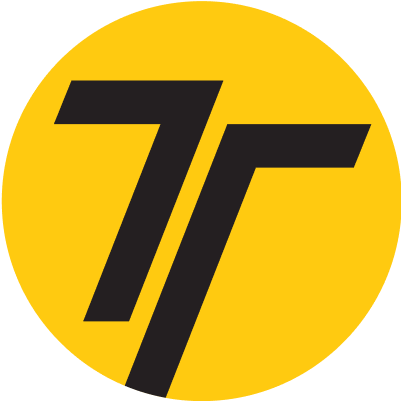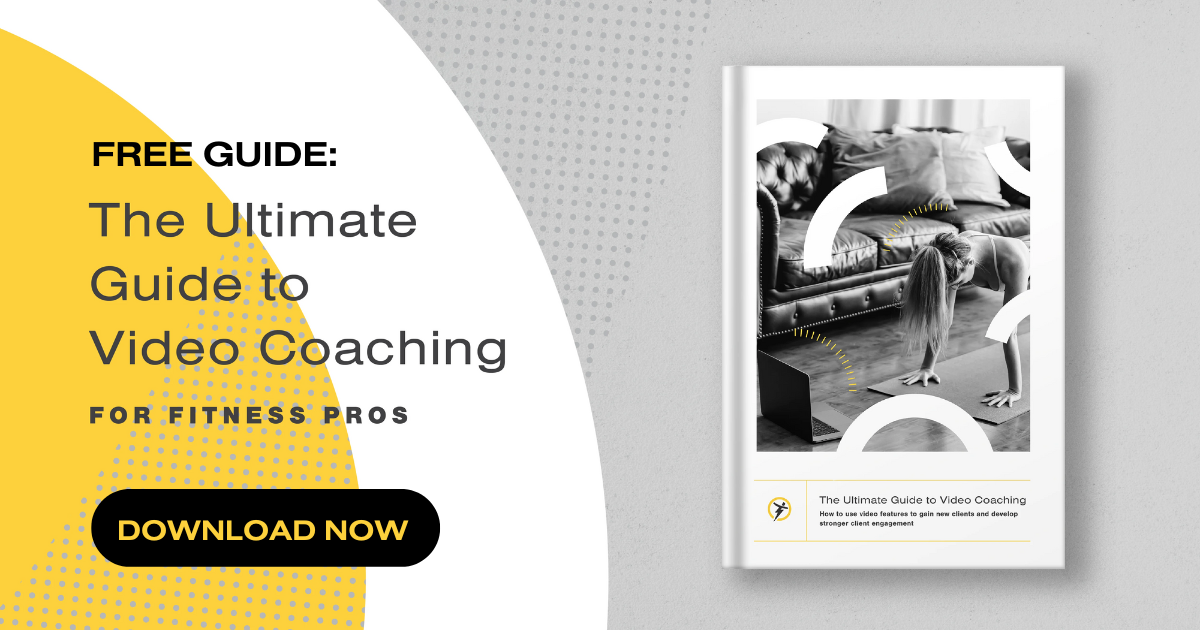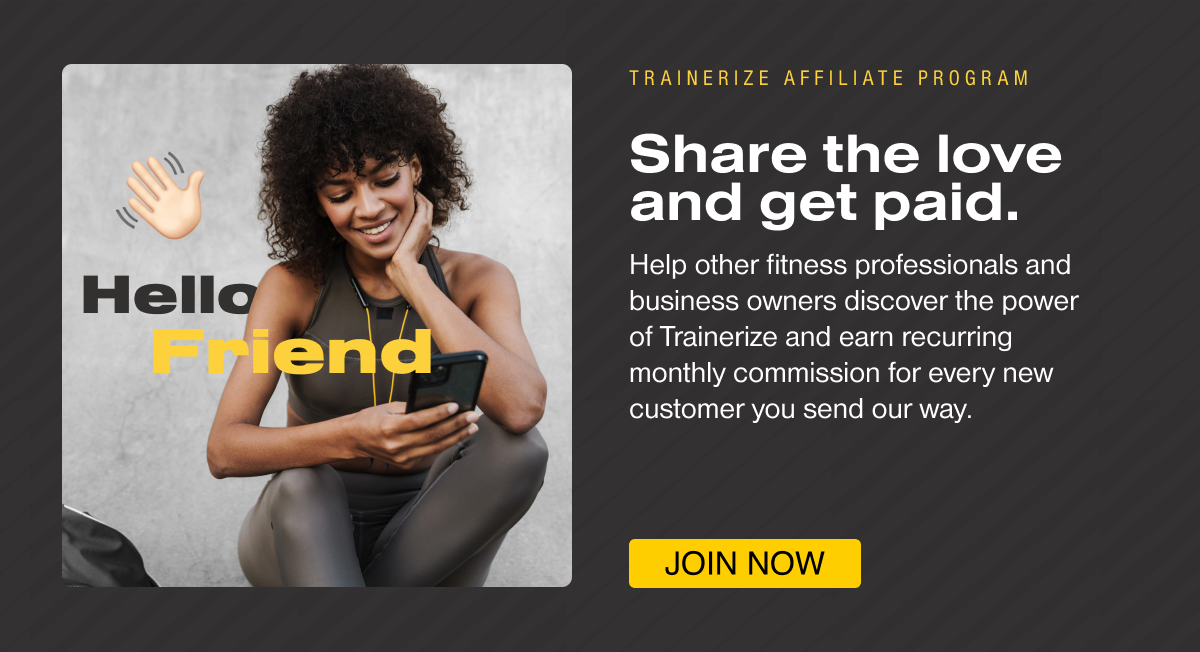Looking for tips on how to craft the perfect personal training resume? We’ve got all the tips and tricks you need inside.
Successful clients are good for your portfolio, but every personal trainer worth their creatine has a polished resume, too. Your resume showcases your greatest hits, your journey in personal fitness, and it’s the first thing gyms will ask new fitness trainers for—like with any other job.
In other words, you need one. Crafting an effective personal training resume isn’t easy, though, and many trainers are left scratching their heads when it’s time to write. Luckily, our team at Trainerize has worked with thousands of trainers and we’ve cracked the code on effective resume-writing for fitness experts.
So, grab your laptop, reflect on your work experience (yes, even that job with the boss you didn’t vibe with), and get ready—’cause we’re going to bring your personal training resume to life.
5 stand-out resume templates for personal trainers
Trainers like Tony Horton and Michelle Lewin aren’t publishing their resumes online, but there are still plenty of excellent examples out there. These are some of our favorite personal trainer resumes, both in terms of design and style. Plus, they’re all templates—so you can make any of these resumes your own.
Stacy Lincoln (EasyResume)
Source: EasyResume
The headshot and initialed logomark up top gives this EasyResume template a classy sheen, and the design makes scanning for important information like work experience easy. It’s also well-written, and each line leads with strong action verbs like “developed,” “educated,” and “trained.” Green flags all round—so take notes, my friend.
Monique Nicholson (CarefreeResume)
Source: Etsy
People read the top left parts of resumes first, and this bright, poppy template from CarefreeResume puts your training and education right in the spotlight. It also brings attention to your social media channels and contact information, which makes it easy to reach out. It’s even editable in Microsoft Word, so making this template your own will be a piece of cake.
Britney Atkinson (Resume Giants)
Source: ResumeGiants
Simple, punchy and sporty—that’s this Resume Giants template in a nutshell. Fully customizable in Microsoft Word, it packs a ton of information into a single page without compromising the look. If you’ve got a stacked resume and years of experience under your belt, this could be the one for you.
Andrew Edward (Resume Kraft)
Source: Resume Kraft
This linearly-structured resume is easy to skim, and gives a generous amount of space to fitness certifications and education. Another strength is that they keep the bullet points for each personal training job short and sweet, so potential clients can extract just the right amount of information. Brevity is good, so feel free to steal that strategy for yourself.
🔗 Kick off your online training business!
FREE GUIDE: Get 30 Clients in 30 Days
13 skills and action verbs for your personal training resume
When you’re writing your personal training resume, it’s common practice to start each bullet point with a skill or action word. This helps you keep it brief. “Developed a training regime” is way tighter than “as a trainer and part of my gym’s leadership, I had the pleasure of developing a training regime,” you get me?
Here’s some skills and action verbs we’ve seen on many of our favorite fitness resumes. And yes, stealing’s allowed—in fact, it’s strongly encouraged.
Trained
You’re a trainer, so this one’s a no-brainer. Make sure to drop this in the mix at least once, especially for job titles like “fitness coordinator” that don’t immediately scan as training jobs.
Collaborated
Collaboration skills are a huge part of the job, since you’re working directly with clients—and often, other instructors. Use this action verb to show you’re good with group work and incorporating client feedback.
Led
Whether your speciality is group fitness or one-on-one training, you’ve definitely been a leader, so mention it. Work this action verb when you’re describing roles where you provided guidance, supervision or direction.
Facilitated
Facilitation is just spicy leadership. It’s a close synonym, but “facilitated” can also be used to describe behind-the-scenes job functions like organizing classes, training other instructors, or managing customer service.
Developed
Developing fitness programs and regimens is core to many personal training jobs. Use this action verb to highlight how you’ve created structured plans for your clients, so people know you’re good at the strategic planning clients need to reach their goals.
Organized
Organization speaks to the logistical side of leadership, and it’s a powerful action verb many gym recruiters look for on personal training resumes. Getting up and leading is one skill, but managing everything behind the scenes is just as important.
Coordinated
Coordination means successfully juggling different priorities, tasks, and clients, all of which are crucial skills for personal trainers. Throw this term in when describing your personal trainer job and show everyone you’re calm under pressure.
Specialized
We love generalists, but some trainers have sub-specializations like rehabilitation, weight loss, or geriatric fitness. If you’ve got unique experience, use this term (i.e. “specialized in…”) to call attention to the field of fitness that sets you apart.
Designed
Like we said earlier, program design is important to highlight on resumes for personal trainers. Use this action verb to highlight roles where you created structured plans for others—whether they’re athletes or trainers themselves.
Supported
Every athlete needs support from their trainers. Sliding this action verb into your resume shows you’ve got the emotional intelligence needed to build your clients up, grow their confidence, and steer them through challenges.
Taught
Your job title is “personal trainer,” but you’re also a teacher. Use this action verb to highlight the knowledge you’ve passed onto clients about exercise science, healthy lifestyles, human anatomy, and everything in between.
Coached
Coaching refers to leading teams towards fitness or competitive goals, and it’s a great way to highlight your expertise leading groups of athletes. Many trainers start out as coaches, so if you’re trying to break in, this’s a great power verb to include.
Tracked
Lastly, you’ll want to highlight how you measure your clients’ progress towards their goals. Talking about tracking shows you pay close attention to detail, and that you’ll keep careful notes about each client. If you’re a gym recruiter, that’s pure gold.
How to write a better personal training resume: 5 tips
Use templates to simplify the design process
(Almost) nothing’s more stressful than playing with tiny formatting details when you should be… you know, focusing on what’s actually in your fitness trainer resume. When you’re starting out, pick a resume template that speaks to you and tweak it, instead of starting from scratch.
Microsoft Word templates are good for beginners, and Overleaf’s LaTeX templates are even better—if you’re comfortable with a tiny little bit of code. (Seriously, we can’t recommend Overleaf enough for trainers with strong digital skills.)
Include only the essentials
Fitness centers don’t care about the summer you spent WWOOFing in Northern Italy or the three months you worked at Dairy Queen in 2015. When you’re writing, focus on including personal training jobs and jobs that helped you develop relevant skills, like leadership and communication.
That’s how you’ll end up with a tight, focused personal training resume, instead of a long, fluffy breakdown of your entire life story. (Of course, your life story is important, but it’s just not the right context.)
Lead with a professional summary
Professional summaries give you space to explicitly define your leadership style and the virtues you center in your fitness business. Craft a one-paragraph summary that spotlights your years of experience, client base, and approach to training, and you’ll frame how recruiters read the rest of your resume.
Start each bullet point with an action verb
We touched on this earlier, but you should start each bullet point with an action verb like “developed,” “organized,” or “trained.” This’ll help you cut down on words, so recruiters and clients can get right to the core of your work experience.
Showcase your training and certifications
After your work experience, your fitness training and certifications are the most important lines you’ve got on your resume. So if you’re a certified personal trainer, shout that out. If you’ve taken courses about health, wellness, anatomy, include the most relevant ones.
Edit, edit, edit!
Before you start sending your personal training resume out, edit it carefully. Read it out loud to check for spelling errors and awkward wording, and send it to a writer you trust, if you know one. Many people skip this step, but it’s an easy way to make a polished first impression.
3 key certifications for your personal trainer resume
There’s many different certifications out there, but these are three of the most crucial and commonly recognized. Include these on your resume to show clients and gyms you’re an expert worth working with.
Cardiopulmonary Resuscitation (CPR)
Fitness isn’t risk-free, and every personal trainer needs to know the essentials of CPR. Most fitness centers won’t hire trainers without CPR certifications, so make sure to include yours on your resume—or go refresh it at your local Red Cross. This sets you up to safely support clients of all fitness levels.
Certified Personal Trainer (CPT)
Offered through the National Center for Certified Personal Trainers, the Certified Personal Trainer (CPT) course is the industry standard certification for fitness professionals. Applicants must be over 18 years old and have valid CPR certifications, but otherwise, CPT certification is open to everyone—It’s a must-have.
Certified Strength and Conditioning Specialist (CSCS)
The National Strength and Conditioning Association’s Certified Strength and Conditioning Specialist (CSCS) certification is another industry-standard qualification many gyms look for. You’ll need a degree in a related field to enroll, so the barriers to entry are higher, but this strength training certification will really set you apart.
Should I align my personal trainer resume with the job description?
Yes, tweaking your personal trainer resume to match the job description is always a smart strategy. This doesn’t mean doing a complete rewrite every time, though. Write your resume, and then cherry-pick a few small pieces of language from each job description to add.
For example, if a job description mentions good customer service, add that you “delivered excellent customer service” to one bullet point. You’ll look like you’ve custom-tailored the entire resume, even though you’re just doing little changes. That is how you land personal trainer jobs like a pro.
Once you’re hired, Trainerize can deliver even better training services and build up your client base. You’ll have easy access to client information inside our platform, and deliver services like meal plans and online training stress-free. Your clients will smash all their fitness goals, and you’ll be able to scale your fitness business faster than ever.



